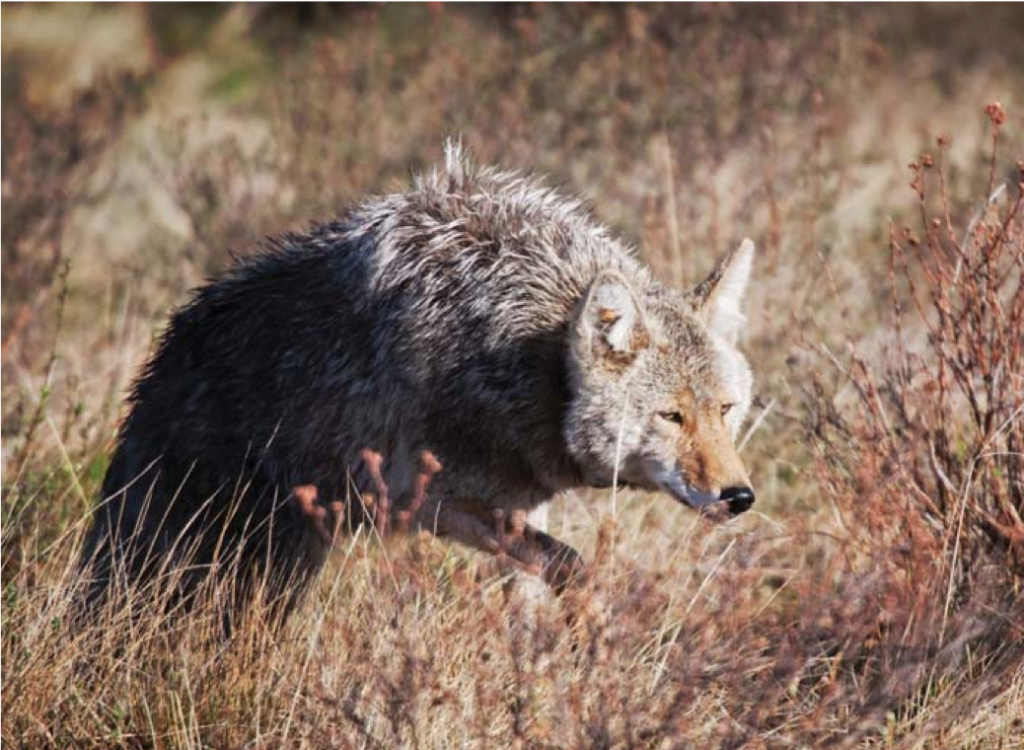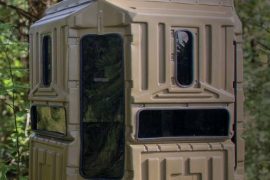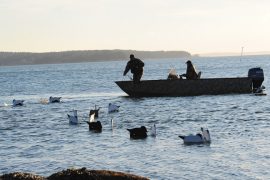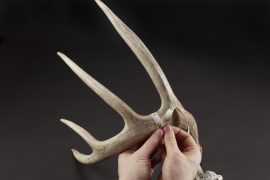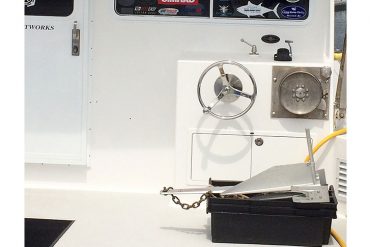
As I discussed in previous Deer & Deer Hunting articles, white-tailed deer populations seem to have peaked throughout much of North America and now are on the decline — in some areas sharply. Obviously, fewer deer means fewer hunting opportunities.
By John Ozoga
For Deer & Deer Hunting
The reasons for this deer population decline undoubtedly vary from one section of the country to next. This is a complex issue. Excessive deer mortality factors might occur for many reasons, including malnutrition, predation, disease, as well as other natural and human-induced factors. Regardless, the apparent primary reason for this population decline is high mortality among fawns and resultant poor annual deer recruitment.
The Problem
It’s my contention that the primary problem is habitat related on Northern deer range, and is probably the case in the Midwest and Southwest, too.
In the North, poor quality deer wintering cover is the primary problem. A deficiency in optimal protective conifer cover and insufficient natural browse supply have contributed to increased mortality of wintering deer as well as newborn fawns. Poorly nourished deer not only suffer heavy loss due to starvation, they also are more vulnerable to predators, especially when restricted to poor quality shelter during periods of deep snow. Probably most importantly, however, especially following prolonged winters (as have occurred recently), poorly nourished pregnant does tend to produce inferior offspring that are more likely to die.

In the Southwest, periods of severe drought probably lead to similar consequences. Likewise, in the Midwest plains, changing farming practices have led to a decrease in the amount of high quality fawn-rearing habitat. Major changes include the recent conversion of tallgrass habitat to wheat production, resulting in less quality fawn-rearing habitat and increased fawn losses due to hypothermia and coyote predation.
When debating predation effects from a management standpoint, the problem is to determine if predation of fawns is the major cause of high deer mortality rates, or is it merely compensatory in nature. That is, if fawns are likely to die from other causes, such as disease or malnutrition, then predation is compensatory and fawn losses are inevitable.
In the Southeast, declining deer numbers can be directly linked to the recent spread of coyotes into that region and heavy losses of newborn fawns to predation. In other words, deer losses due to predation are additive and control or eradication of coyotes would presumably lead to an increase in annual deer recruitment rates and deer population increase – a number of studies have proven this. The question, of course, is coyote control wise or practical? Likewise, if not, then what are other management alternatives?
Largely under the direction of Georgia University professor Dr. Karl Miller, researchers launched a series of projects to address these concerns. I’m certain hunters will find these study findings interesting – but probably will not be elated with the conclusions and/ or recommendations.
Coyote Behavior
Coyotes in the Southeast are not evenly distributed across the landscape. As elsewhere, they show preference for certain habitat types, such as agricultural areas, natural openings and early successional habitat, where preferred prey and certain seasonally available fruits and soft mast are most abundant – not dense mature forest cover.

Coyotes prefer some degree of habitat openness and tend to travel cover edges. Sound familiar? So do white- tailed deer. Although many factors influence coyote use of habitat and space, two primary patterns have been identified: some coyotes can be considered “residents,” while others are referred to as “transients.”
Resident coyotes are generally reproductive pairs that demonstrate attachment to a specific area. These preferred areas (i.e., territories) are relatively small compared to the extensive range traveled by transients.
In addition, resident coyotes tend to use certain vegetative patches within their home ranges very intensively. Since these heavily used areas are also favored deer fawning areas, newborn fawns within these patches of preferred cover likely suffer especially high death rates due to predation.
Transient coyotes roam over a much larger landscape and are less likely to concentrate their activities in any specific area. Hence, their predation of fawns should be more evenly distributed across the landscape.
WATCH: Learn the secrets of predator hunting from a veteran!
Predation Risk
These differences relative to coyote social behavior, space use and fawn predation have been rather speculative in nature. However, John Hickman and others from the University of Georgia recently employed more sophisticated research techniques to quantify and evaluate how coyote behavior impacts newborn fawn survival rates and ultimately deer population recruitment. Hickman and his group…

